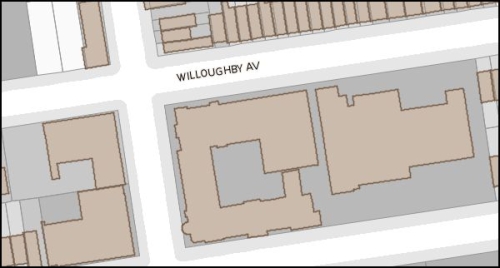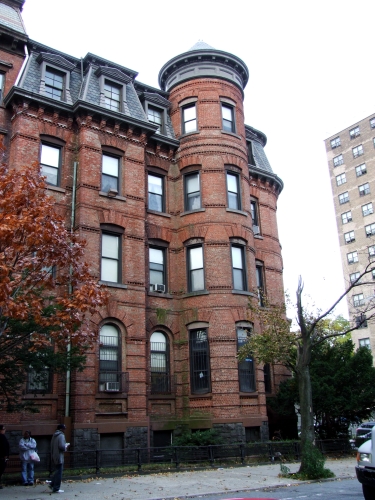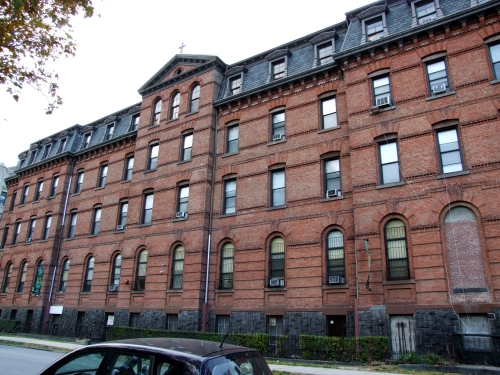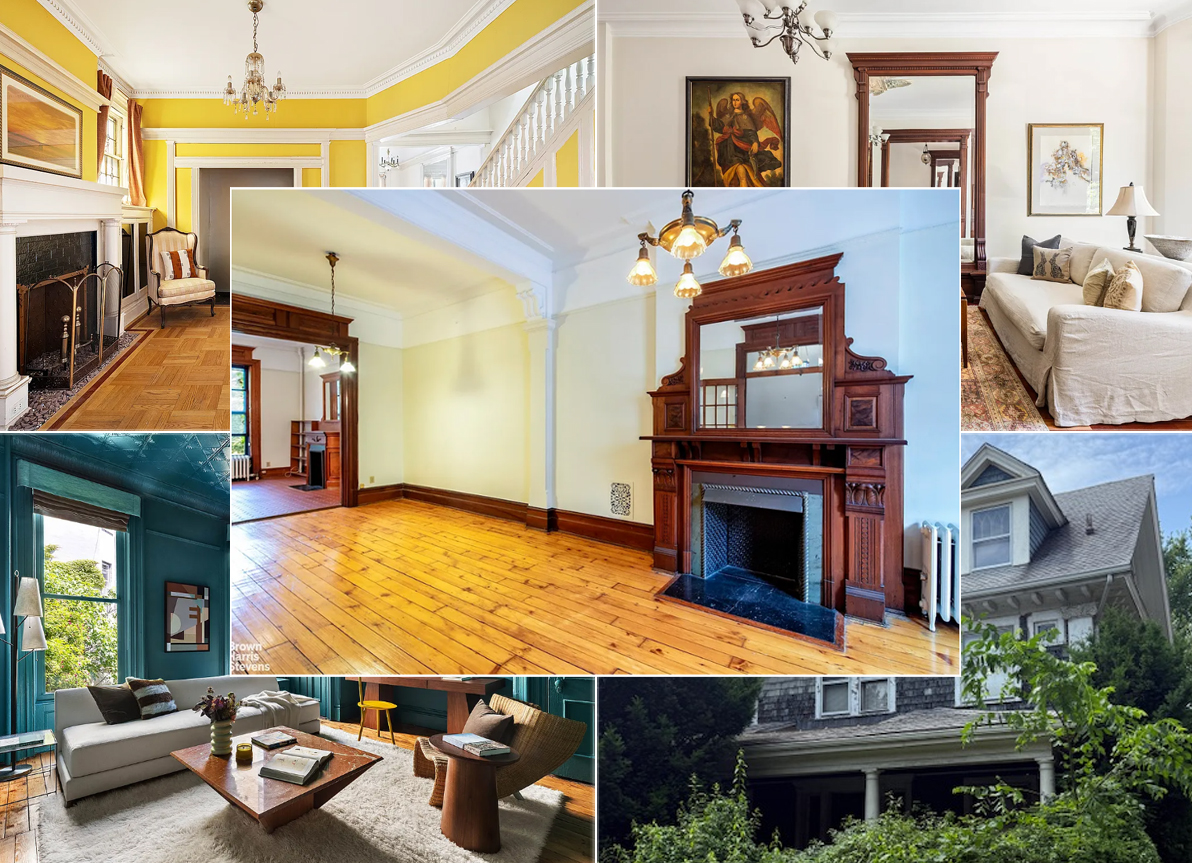Building of the Day: 71-75 Lewis Avenue
Editor’s note: An updated version of this post can be viewed here. Brooklyn, one building at a time. Name: Former St. John’s College Address: 71-75 Lewis Avenue Cross Streets: Entire block between Willoughby and Hart Neighborhood: Bedford Stuyvesant Year Built: 1870-1872 Architectural Style: Romanesque Revival Architect: Patrick Keely Other buildings by architect: Catholic churches throughout…

Editor’s note: An updated version of this post can be viewed here.
Brooklyn, one building at a time.
Name: Former St. John’s College
Address: 71-75 Lewis Avenue
Cross Streets: Entire block between Willoughby and Hart
Neighborhood: Bedford Stuyvesant
Year Built: 1870-1872
Architectural Style: Romanesque Revival
Architect: Patrick Keely
Other buildings by architect: Catholic churches throughout the Eastern seaboard, locally – Cronyn House, Park Slope, and St. John the Baptist, next door to this building, St. Patrick’s, Kent Ave, St. Xavier, Manhattan.
Landmarked: No, but should be
The story: By the 1870’s, the Catholic Church was coming into its own as Brooklyn’s fastest growing denomination. The middle part of the 19th century saw a huge influx of Catholic Irish and German immigrants, who necessitated the building of churches and schools in record numbers. Although the spiritual needs of their burgeoning congregations were of the highest importance, the Church also was very interested in all levels of education. Most of Brooklyn’s larger Catholic churches had elementary and often high schools attached to them. For higher education, many Catholic young men were going to Fordham University in the Bronx, but that school was quite a commute for a young man in Brooklyn, so by the 1870’s, the Diocese of Brooklyn established its own college, called St. John’s College.
The cornerstone for St. John’s College was laid in 1870 by the head of Brooklyn’s clergy, and its first bishop, Bishop John Laughlin. The new college began as an enormous squarish building with a central courtyard. It was designed by Patrick Keely, the pre-eminent architect for the Catholic Church in the late 1800’s, whose churches and related buildings stretched from Nova Scotia to the Gulf of Mexico. Over the course of his lifetime, Keely designed nearly 600 churches, and hundreds of schools and other buildings, mostly for the Catholic Church, with a few Protestant churches tossed in, as well.
Keely was an Irish-born immigrant who made his home here in Brooklyn, and later in Providence, RI. He had no formal architectural training, but was taught the building trade by his father, who was a draftsman and builder. Upon arriving in America, he worked as a carpenter and builder, until his work on Sts. Peter and Paul Church, in Williamsburg got the attention of the Diocese, and he never looked back. His work on St. John the Baptist Church, next door to this school, will be covered in a future BOTD.
For the new St. John’s College, Keely designed a massive four story and basement Victorian pile, a Romanesque Revival brick building with intricate brickwork, a multicolored slate Mansard roof, turrets and towers, dormers, bays, bows and a domed cupola. There are plenty of windows for natural light, and a central courtyard that is enclosed by the wings of the building. It’s very impressive.
The first wing of the school opened in 1870, with the rest of the building completed by 1872. The building faces Lewis Avenue, as well as Willoughby and Hart, which was called Yates Avenue back then. The school eventually expanded to two new buildings across Lewis Avenue. With an addition of a Law School, located in Downtown Brooklyn, St. John’s became a university. It stayed in Bedford Stuyvesant until the 1950’s, when it relocated to Queens.
The massive building has been a number of Catholic schools and community service institutions ever since. During the mid-1980’s, part of it became the New Bedford Stuyvesant Catholic Junior High School, where my mother was teaching when she died in 1985. The school has since disbanded. Today, it is home to the New Horizons Adult Education Center, as well as several other parish-based and community institutions. This building, as well as St. John the Baptist Church, needs to be landmarked. They are important in the history of Brooklyn, as well as fine examples of Patrick Keely’s work. GMAP










Now that’s Victorian!
a little on the dour side, brooding even, but very significant.
It’s not landmarked so I naturally assume it is still owned by the Catholic Diocese?